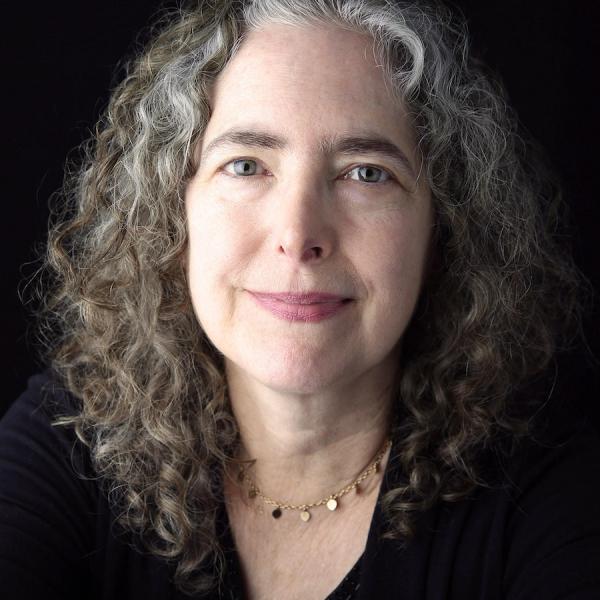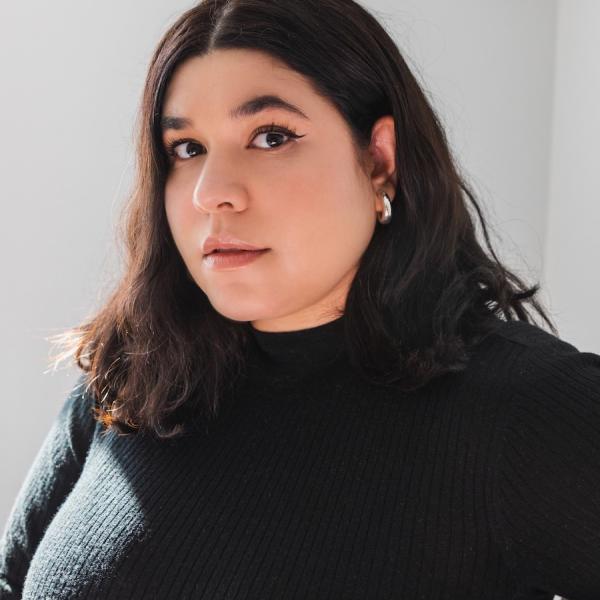Quick Study: December 20, 2023
Jo Reed: Welcome to Quick Study, the monthly podcast from the National Endowment for the Arts. This is where we'll share stats and stories to help us better understand the value of art in everyday life. I'm co-piloting Quick Study with Sunil Iyengar. He's the Director of Research and Analysis here at the Arts Endowment. Hi Sunil.
Sunil Iyengar: Hi, Jo.
Jo Reed: So, tell me, what are we talking about today?
Sunil Iyengar: Well, let me start by asking you, Jo: When we researchers talk about some of the societal benefits of the arts, how often have you heard terms like “social and civic engagement” thrown around?
Jo Reed: Okay, is this a trick question? You guys do use that term a lot.
Sunil Iyengar: Yeah, well, guilty as charged.
Jo Reed: In all seriousness, because so much research, including what we do at the NEA, has shown strong links between arts participation and civic engagement. We've been singing in that choir for a long time.
Sunil Iyengar: Yeah. That's true. And some of our own data analyses suggest that people who participate in the arts are more likely than others to do volunteering, for example, or take part in other civic or social activities. We've also seen how arts and cultural assets in a community can contribute to social capital and also to people engaging with civic issues in their own neighborhoods. We've talked about some of these studies on this very podcast, especially in light of the Surgeon General's advisory urging programs to promote greater social connectedness in an era of loneliness and isolation.
Jo Reed: Yes, indeed. I remember those.
Sunil Iyengar: Now, I do admit that as a field, we tend to play, I would say, a little fast and loose in talking about social or civic engagement.
Jo Reed: Well, back that up. What do you mean, you playing fast and loose?
Sunil Iyengar: Well, what I mean is, for instance, that organizations of all types may engage community members, for example, in doing arts activities, arts education, or arts programming. This may in turn lead to more connectedness within the community and a greater sense of community identity. But then you also have arts organizations striving to affect social or civic action. I think sometimes when we talk about arts and community or civic benefits, and I think I've been kind of guilty of this, we may blur those lines somewhat. So that's what I meant. So that's why I was interested in new survey research by Marie Kim and Jodi Benenson, respectively, from George Mason University and the University of Nebraska Omaha, that puts this all in the context of the missions and operations of nonprofit arts and cultural organizations. So the researchers map three distinct types of engagement that nonprofit arts groups may commit to. These types are audience engagement, community engagement, and civic engagement.
Jo Reed: Okay. So given what you just said about fast and loose, how are they defining these?
Sunil Iyengar: Yeah, they do a pretty good job. They did a really good job actually in defining the terms. They rely on a framework developed by the arts advocate, artist, and educator Doug Borwick and others. So for example, for audience engagement, it's pretty obvious. In their terms, it's the creation and delivery of arts experiences, where the goal is to foster receptivity in potential audience members. So they're willing to acquire those experiences. That is kind of willing to contribute time or money as may be needed by the organization to fulfill its mission. Now the researchers do acknowledge that research has shown some incidental benefits that may result for community cohesion or community wellbeing. But the key aim here is audience development. Next let's talk about community engagement. According to Kim and Benenson-- this term implies a, quote, “Two-way process in which one party motivates another to get involved or take an action,” end quote. The two parties here are the nonprofit arts and cultural organization on the one hand, and on the other, the entire community where it operates. There's some overlap with audience engagement for sure, but, on the whole, the researchers say, and I'm going to quote them here, “Audience engagement focuses on having members of the public experience a relationship with the arts as created and/or presented by the artist or organization, while community engagement seeks to develop relationships that potentially transform both the arts and individuals who come to enjoy the arts.” So they add that to be a hub for truly community-engaged activity, the organization must invite open and honest two-way communication between itself and its audiences. An organization adopting this approach must be willing to change, I think that's key, based on the needs voiced by the community.
Jo Reed: Okay. So that's the difference between audience engagement and community engagement in their report.
Sunil Iyengar: Yeah.
Jo Reed: And then there's civic engagement.
Sunil Iyengar: That's right. The third one. So this one's probably the simplest to understand. It's all the political and nonpolitical processes that individuals invoke to improve the quality of lives of their communities or neighborhoods: you know, voting, volunteering, taking part in community meetings or activities designed to advance a public outcome. By defining these three different forms of engagement-- audience, community, and civic-- the authors hope to provide a way for nonprofit arts and cultural groups to see themselves on a continuum and to change their organizational behavior accordingly, depending on where they would like to land. Now, Jo, the researchers start by assuming that audience engagement is a prerequisite for civic engagement. In other words, art groups can't bring about a community change unless they engage with their audiences directly. But if an organization wants to develop successful programming to advance civic goals, then two-way interaction, or community engagement, is required. But what makes the article potentially useful is that Kim and Benenson investigate the actual practices of nonprofit arts organizations to empirically test the framework I've described.
Jo Reed: How did they come to these conclusions? You mentioned they did a survey?
Sunil Iyengar: Yeah, right. The researchers combed IRS data to identify a random sample of nonprofit arts and cultural organizations to participate in periodic online surveys. They got completed responses from executive directors, or their equivalents, at 106 organizations for a 34% success rate. They asked organizations to respond to multiple-choice questions about engaging audiences and visitors, but they also included write-in spaces for organizations to give information on any social or civic issues they tried to address or about the types of audience participation or community engagement they encouraged through their programs. So the survey results showed that while most nonprofit arts and cultural organizations said they developed programs, quote, “Relevant for local community members,” and they offered, quote, “participatory programs,” they were not often very active in collecting data on audience preferences or in-- this is important-- or in involving audiences and visitors in program planning. They also found separately that when they asked executive directors to rate the importance of civic or social issues for their organization, half of them deemed such issues as extremely or very important, but nearly one-third of these organizations expressed ambivalence about this importance, and roughly one out of ten said such issues were not important for arts and cultural organizations.
Jo Reed: Wow. So then how do these survey responses relate back to what you said earlier about the trinity of audience engagement, community engagement, and civic engagement?
Sunil Iyengar: So that's the thing. The research methodology allowed Kim and Benenson to analyze relationships between these three forms of engagement to see whether they were interdependent. And, indeed, they found that if you hold other factors constant, such as an organization's financial size, its location, or the type of arts organization it is, then you see that when an organization increases its level of audience engagement, it sees a corresponding increase in civic engagement. But the researchers found a much stronger positive correlation between the organization's levels of community engagement and their levels of civic engagement. So Kim and Benenson conclude that community engagement, in fact, works as a mediating factor between audience engagement and true civic engagement. So if organizations want to nourish civic engagement through their arts and cultural missions, then both audience engagement, but particularly two-way interaction with their communities, will be critical levers.
Jo Reed: Okay. Here's the biggie: Do you have any idea how these findings might inform our own practices at the NEA?
Sunil Iyengar: So I don't know about directly informing those practices, but the study is instructive. Through the qualitative data, that is the write-in responses I mentioned, the researchers found that partnerships, especially with the local government and social organizations, seem to characterize organizations with strong community and civic connections-- arts organizations with those connections, that is. This is useful to know because the NEA has just embarked on a national study of local arts agencies. And, second, in many cases, civic or social issues were embedded directly in the nonprofit arts and cultural organization's mission. One organization, the researcher's cite, has a mission that requires them to address LGBTQ issues through their theater programming. And another, for example, has a mission to advocate for Taiwanese Americans. So that too shows up in the types of programming they produce. And, as you know, Jo, the NEA working with South Arts and the regional arts organizations, recently announced Arts Here, a national pilot grant initiative to support capacity-building for arts organizations to promote arts participation in historically underserved communities. So it will be interesting to see how many of the successful grant applicants turn out to have durable local partnerships or mission statements that expressly call out civic or social reform.
Jo Reed: Well, we will stay tuned for that, and I look forward to seeing how that shakes out. Thank you, Sunil. And happy holidays.
Sunil Iyengar: You too, Jo. Happy holidays.
Jo Reed: Thank you. That was Sunil Iyengar. He's the director of research and analysis here at the National Endowment for the Arts. You're listening to Quick Study. The music is “We Are One” from Scott Holmes Music. It's licensed through Creative Commons. Until next month, until next year, I'm Josephine Reed. Thanks for listening.
In this episode of Quick Study we discuss what “engagement” means, in the context of nonprofit arts organizations working with audiences, communities, and civic affairs.




